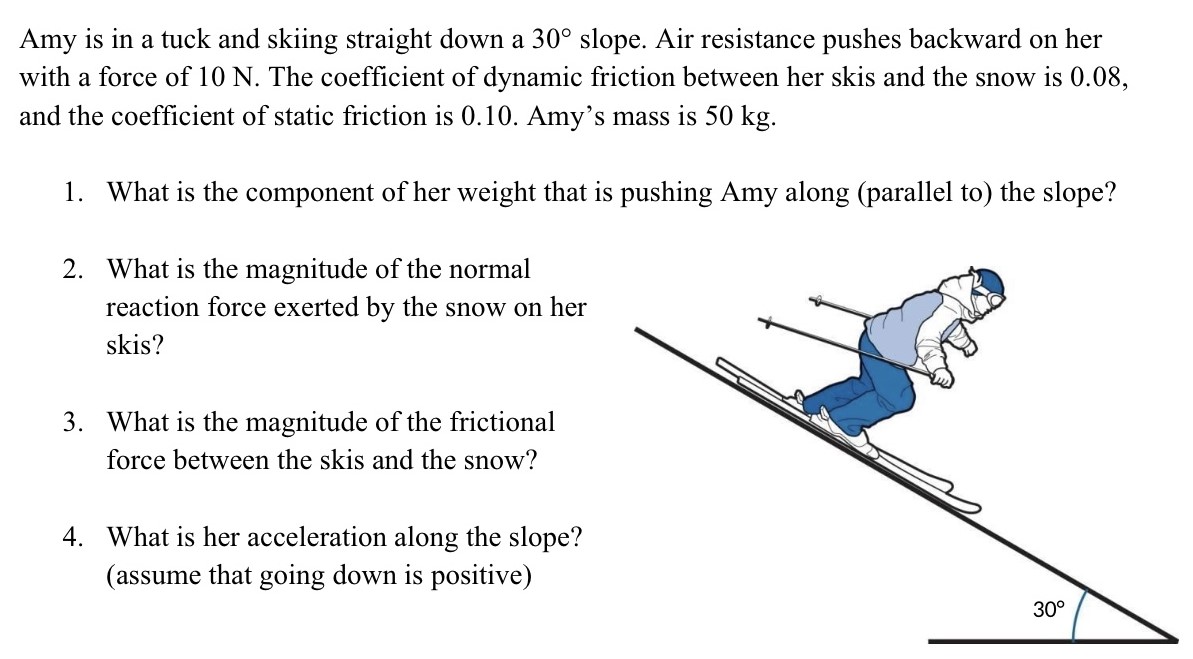Amy is in a tuck and skiing straight down a 30∘ slope. Air resistance pushes backward on her with a force of 10 N. The coefficient of dynamic friction between her skis and the snow is 0.08, and the coefficient of static friction is 0.10 . Amy's mass is 50 kg. What is the component of her weight that is pushing Amy along (parallel to) the slope? What is the magnitude of the normal reaction force exerted by the snow on her skis? What is the magnitude of the frictional force between the skis and the snow? What is her acceleration along the slope? (assume that going down is positive)
